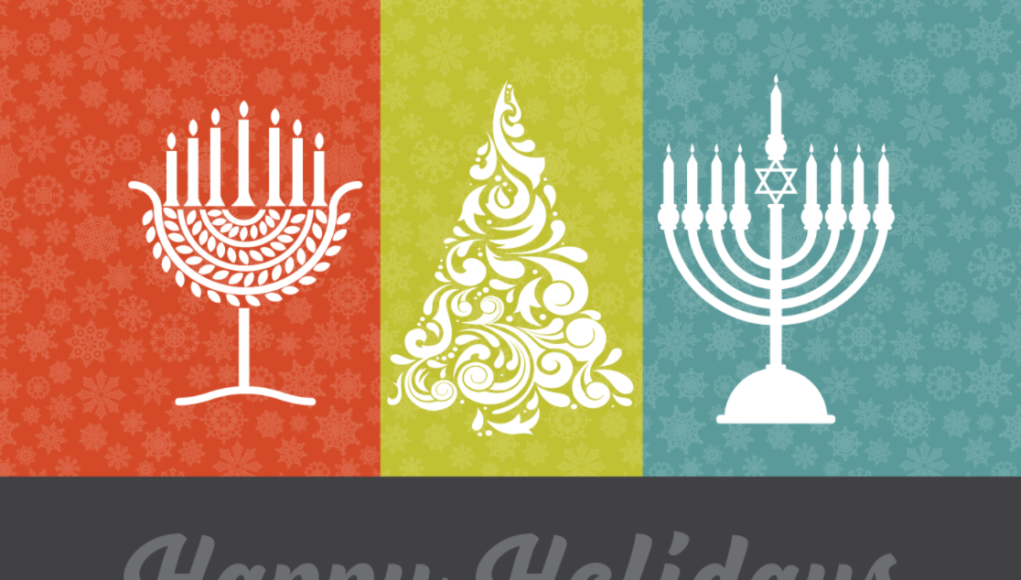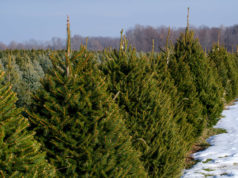by Miriam Pochapin and Ava Cunningham
Hanukkah: By Miriam Pochapin
Thursday, December 10th – Friday, December 18
The eight-day Jewish celebration known as Hanukkah or Chanukah commemorates the rededication during the second century B.C. of the Second Temple in Jerusalem. The celebration of Hanukkah was instituted by the Maccabeus in 165 BCE to celebrate their victory over Antiochus IV Epiphanes, the Seleucid king who had invaded Judaea, tried to convert the Jews and desecrated the Second Temple in Jerusalem, (there was also a bit of a war.) Following the victory in a three-year struggle against Antiochus, Judas ordered the cleansing and restoration of the Temple, which had been destroyed by the opposing army. When the temple had been rebuilt, Jews from miles away gathered to have a big feast and to celebrate their victory, The reason we light candles or oil lamp Hannukias is to remember the miracle of the special oil, which lasted for 8 days instead of the expected 2 or 3, which allowed the Jews to travel and get more of the sacred oil. Now, Hanukkah is celebrated by Jews all around the world by eating traditional food, playing Dreidel, (which is a whole other story), and lighting their Menorah or Hanukiah (also another story).
Fun Fact: Originally, there was probably only one small gift exchange for Hanukkah, but it has become more commercialized over time (also it is just fun to give and receive gifts)
Kwanzaa: By Ava Cunningham
Saturday, December 26 – Friday, January 1
Kwanzaa is a fairly recent celebration but takes ideas from other ancient African traditions. Kwanzaa was created in 1966 by Dr. Maulana Karenga as a way to bring together the African-American community. The name comes from the phrase in Swahili “matunda ya kwanza” which means “fresh fruit.” Kwanzaa is a seven-day celebration and focuses on the Nguzo Saba (which means seven principles in Swahili). The seven principles are: Umoja (Unity), Kujichagulia (Self-determination), Ujima (Collective work and responsibility), Ujamaa (Cooperative economics), Nia (Purpose), Kuumba (Creativity), and Imani (Faith). Each night, one of the seven principles is discussed. Each night, a candle is also lit. The one black candle, lit on the first night, is for Umoja. The three green candles go to the right of the black one and represent Nia, Ujima, and Imani. The three red candles represent Kujichagulia, Ujamaa, and Kuumba and go on the left side of the black candle. All the candles go on the Kinara which represents ancestry. The Mkeka is a mat usually made of straw or cloth that some of the other objects are placed on, like the Kinara and the Vibunzi (ear of corn). There is one ear of corn for each child in the family and it symbolizes fertility and future hope for the family. The Kikombe Cha Umoja, or Unity Cup, is a cup with some sort of drink in it passed around at the feast on December 31st. Some families have special cups just for this purpose. The last small bit of the drink is given to the eldest person at the table who then pours it in the direction of the four winds – north, south, east, and west – to honor the ancestors. Overall, Kwanzaa is a celebration of family and community and is happily celebrated with music, food, and gifts.
Boxing Day: By Ava Cunningham
December 26
Boxing day is a day celebrated mostly in the U.K., Australia, Canada, and New Zealand. It is a holiday where gifts are given to those in the lower classes with less money. Now people usually give gifts before Christmas and Boxing day is a day to get together with family and friends. There are many theories as to how this tradition was started. Some people think it started from when a long time ago, the lords and ladies and fancy rich people would give gifts to the servants and staff of their home on the day after Christmas. Other people think it started when the clergy members of the church would pass out things from their Alms Boxes to the poor. The Alms Boxes were boxes in the church where people could leave donations during the holiday season. This might be why it’s called “boxing” day. No matter how it started, it is still a day of giving and helping others.
The Soyaluna Ceremony: By Ava Cunningham
December 22
The Soyaluna Ceremony is a ceremony celebrated by Native Americans around the winter solstice. The ceremonial rituals usually take place in underground rooms called kivas. People bring offerings of corn to the altar and cornmeal is spread on the floor by the priest. The winter solstice is the day in the year when the sun moves farthest away from the northern hemisphere. For this reason, the rituals that are done are to try to persuade the sun to come back and bring good luck for the new year in agriculture.
References:
https://worldstrides.com/blog/2015/12/december-holidays-around-the-world/
https://www.history.com/news/why-is-the-day-after-christmas-called-boxing-day
https://nativeamericanloveforever.com/native-american-holidays-pow-wow-calendar/




